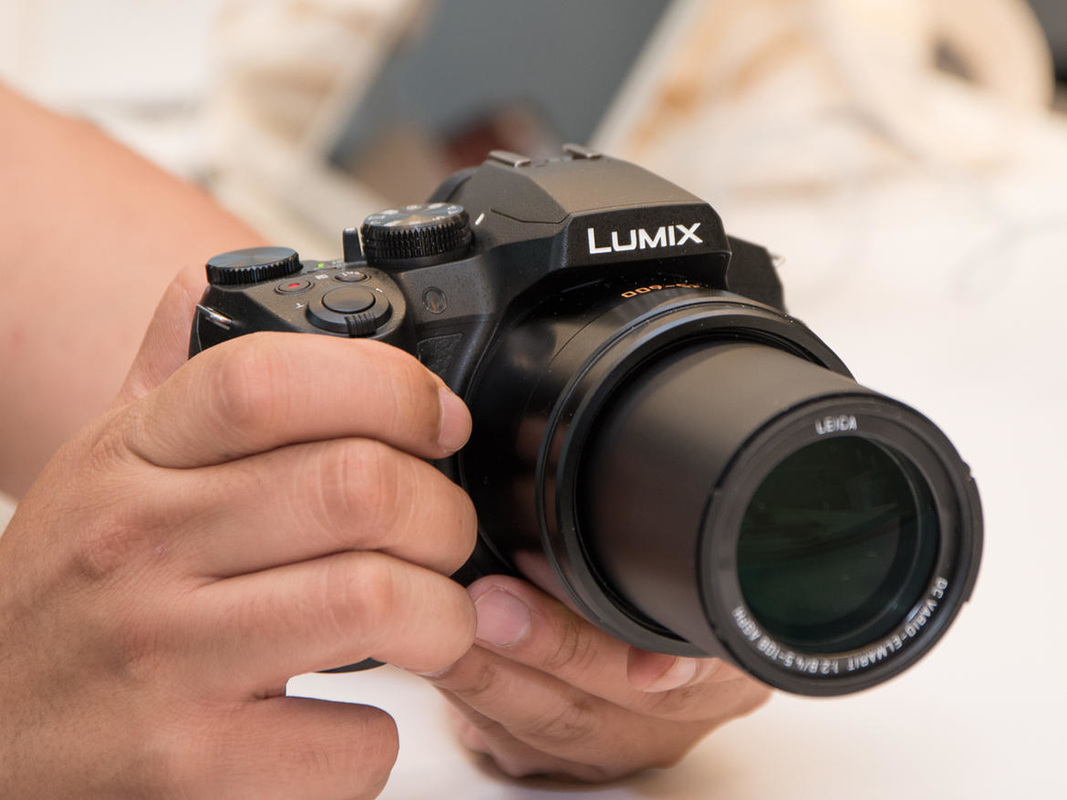

Default contrast is on the high side, but that's how most consumers prefer their photos. The default exposure is quite good in our Far-field shot, with very few blown highlights, though again there are some very deep shadows that are noisy and discolored. Quite a few highlights were blown in the mannequin's shirt and flowers though, and there are some very deep shadows that are noisy and posterized, however that's to be expected from such a small sensor. Exposure accuracy is about average, as the camera required +0.7 EV compensation for our "Sunlit" Portrait shot to keep facial tones reasonably bright.
Using izoom fz300 skin#
Skin tones are fairly realistic in our "Sunlit" Portrait shot, with a healthy-looking push of pinks and reds which is preferable to too flat and yellow, though transitions from lighter to darker skin tones showed a noticeable color shift. Outdoors, the Panasonic FZ300 performed well for its class, with natural-looking though slightly cool colors in the Far-field shot. Natural colors overall, with a tendency toward high contrast under harsh lighting. (Our test lighting for this shot is a mixture of 60 and 100 watt household incandescent bulbs, a pretty yellow light source, but a very common one in typical home settings here in the U.S.) (Note: The FZ300 also has a Kelvin Temperature White Balance option, however we did not test that mode.) The Panasonic FZ300 required +0.3 EV exposure compensation which is about average for this scene.
Using izoom fz300 manual#
The Manual setting produced very good, neutral results. Results with the Incandescent setting were quite warm and orange. Indoors, under normal incandescent lighting, color balance was a bit cool and magenta with the Auto white balance setting, though it performed better than most cameras. Manual was pretty accurate, just slightly cool. The Auto setting produced slightly cool results and Incandescent was quite warm. See thumbnails of all test and gallery images
Using izoom fz300 full#
See full set of test images with explanations With a mean "delta-C" color error of 5.35 after correction for saturation, hue accuracy is about average.

The FZ300's handling of yellows is one of its weaknesses: Yellows are noticeably undersaturated, and shifted slightly toward green. The cyan to blue shift is very common among the digital cameras we test we think it's a deliberate choice by camera engineers to produce better-looking sky colors. The Panasonic FZ300 shifts cyan toward blue by quite a bit, but most other shifts like orange toward yellow, and yellow toward green are by smaller amounts. Where oversaturation is most problematic is on Caucasian skin tones, as it's very easy for these "memory colors" to be seen as too bright, too pink, too yellow, etc.

Here, the Panasonic FZ300 did a decent job, producing reasonably natural-looking Caucasian skin tones with Auto white balance in simulated daylight, though transitions between lighter and darker skin tones showed a noticeable color shift from pink to more yellow. This is simply because most people like their color a bit brighter than life. Most consumer digital cameras produce color that's more highly saturated (more intense) than found in the original subjects. Most other colors are close to accurate in terms of saturation. The FZ300 pushes dark blues quite a bit, but only oversaturates dark red and dark green by small amounts, and it undersaturates yellow moderately. Mean saturation levels are a little lower than average from the Panasonic FZ300 using default settings at base ISO, at 106% or 6% oversaturated. Thus, hue-accurate, highly saturated colors appear as lines radiating from the center. Hue changes as you travel around the center. More saturated colors are located toward the periphery of the graph. In the diagram above, the squares show the original color, and the circles show the color that the camera captured. Below average mean saturation levels, with about average hue accuracy.


 0 kommentar(er)
0 kommentar(er)
